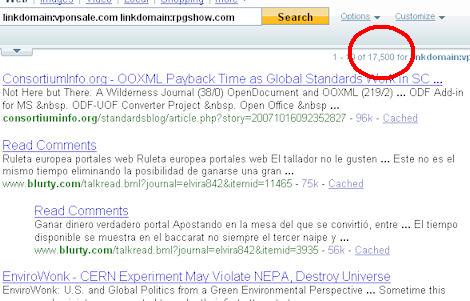If you have an interest in researching spam by other sites and quantifying it, there are a few things you can do. One of these is to dump out a spreadsheet of all a site’s backlinks using a tool like Linkscape or Link Diagnosis. Then you can analyze the links. This can be a painful process, but here are a couple of tips on how to speed the process up significantly.
1. Sort by anchor text: This is easy to do, and if the site you are buying is purchasing links, you will surely see an un-natural distribution – Gee how did they get 70% of their links to be their target keywords? Most likely, by purchasing links, WordPress templates (or equivalent), or a widget such as a hit counter with embedded links (or equivalent). Anything more than 5%-10% of the links containing the same anchor text is a flag in my opinion.
Note that you should still doublecheck a sampling of the links, because there are other ways that this can happen, such as a legitimate widget with a link back to a page that is the source of the data in the widget.
2. See who is buying links in the same place: If you manually research a few pages that have paid links on them, you may see that some sites tend to be buying links on the same site. I did this recently for a wedding site called vponsale.com after I noticed that they had a lot of links in common with rpgshow.com. I then typed this search into Yahoo:
linkdomain:vponsale.com linkdomain:rpgshow.com returns 17,500 results
and, here are the results:
 |
That’s a heck of a lot of links in common for two sites with nothing in common This happens one of two ways – they have bought links from an ad network, or they own both web properties and got lazy in implementing their spamming.
The above example illustrates why spamming is an increasingly difficult game. It is not really hard to spot these patterns. If I can do it this easily imagine how easy it is with the search engines when they have all the data sitting in hand.
